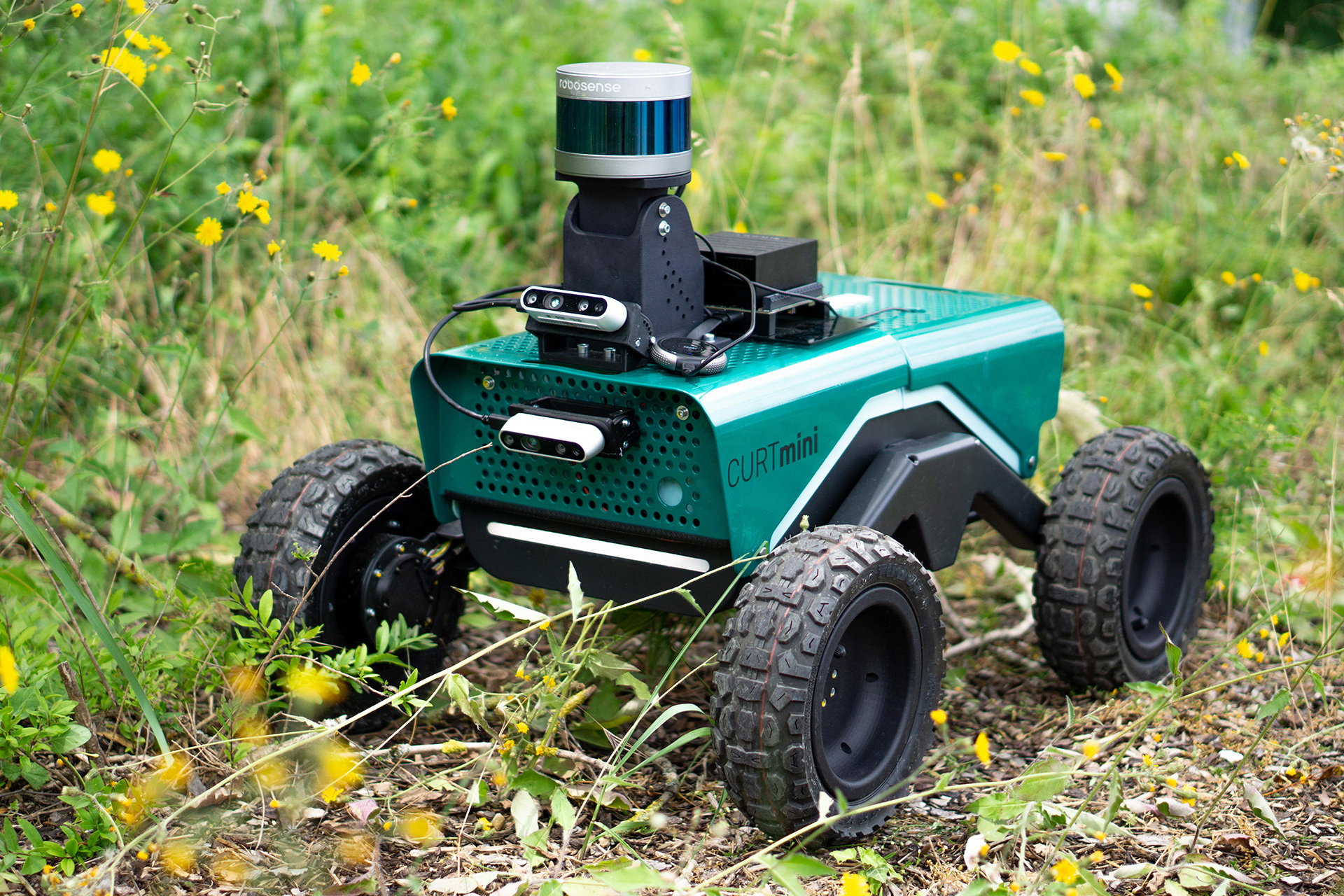Further development in the direction of outdoor navigation is not quite as simple: In contrast to indoor areas, most outdoor areas tend not to have any stationary structures such as walls or shelves that mobile robots can consistently use for orientation purposes even over a matter of weeks. On the contrary: Outdoor areas feature a variety of potential obstacles, all of which must be interpreted. For example, tall grass is flexible and can be driven through or over. However, the presence of a baby deer should by no means be overlooked, no matter how deeply it might be nestled in the grass. The subsoils themselves can also be very different and have varying levels of traversilibity. And depending on the weather, visibility might be limited. This can reduce the quantity and quality of sensor data collected.
IPA robots demonstrate autonomous route planning capability
The autonomous outdoor navigation technology developed at Fraunhofer IPA under the watchful eye of Kevin Bregler can cope with all of these challenges and allows agricultural robots to be used, for example, for mechanical weed control. In addition to software development, the research group is creating agricultural robot prototypes known as “CURT”. Two of these robots will be on show at the trade fair stand, giving visitors an insight of how it all works.

